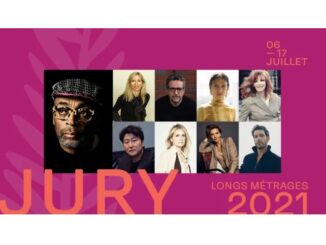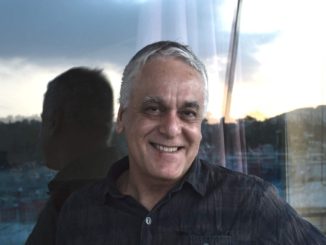
By Mel Lambert
The nominees in the Best Sound category at this year’s Academy Awards represent an array of noteworthy films.
To learn more about the post teams behind these innovative soundtracks, CineMontage reached out to Erik Aadahl, MPSE, Ethan Van der Ryn, Tom Ozanich and Dean A. Zupancic for “The Creator;” Richard King, Jason Ruder, Tom Ozanich and Dean A. Zupancic for “Maestro;” Richard King, Gary A. Rizzo, CAS, and Kevin O’Connell, CAS, for “Oppenheimer;” and Johnnie Burn, CAS, MPSE, for “The Zone of Interest.” (The soundtrack for “Mission: Impossible – Dead Reckoning Part One” was realized by non-Local 700 members James Mather, Chris Burdon and Mark Taylor.) Several of these films also received CAS and MPSE Award nominations.
‘The Creator’
For “The Creator,” a sci-fi action tale, long-time collaborative partners Erik Aadahl and Ethan Van der Ryn from E2 Sound supervised and designed “in a ‘mind-meld’ kind of way,” Van Der Ryn said. “We strove to challenge ourselves to create a unique soundscape that would contain moments and sequences with the power to take the audience’s breath away.”
News of his Oscar nomination came as a surprise, Aadahl recalled. “I didn’t see any messages on my iPhone, so I assumed we weren’t nominated. I then realized my phone was in ‘Do Not Disturb’ mode; dozens of messages came flooding in, the first from [director] Gareth Edwards.”
For this soundtrack, “Gareth wanted a sonic style of ‘retro-futurism’ mixed with realism,” Aadahl said. “We embraced the real sounds of nature, which I recorded in Cambodia, Laos, Thailand and Vietnam. The on-location crowds in multiple languages – some human, some robotic or invented – demanded a style of lived-in reality. Gareth wanted to recall a nostalgia for classic science fiction using analog sound-design techniques like Vocoders from the 1970s. That style of sci-fi could contrast with the fully futuristic, adding high-fidelity robot, vehicle and weapon technology.”

“Gareth is a total inspiration to work with,” Van der Ryn said. “One of the guiding principles he spoke about is to always make the more unusual choice, in terms of how to play the sound in a given moment. At every important juncture we would ask ourselves: ‘What would be the expected thing to do with the sound here?’ And then we would do the opposite.”
Re-recording mixer Dean Zupancic’s initial reaction to his Oscar nomination was shock. “We knew “The Creator” had potential and was getting great feedback from those who saw it,” he said. “ ‘Maestro’ was announced next and I was stunned: we had two! I had an overwhelming sense of gratitude.” He and his mixing partner Tom Ozanich have received two prior Best Achievement in Sound Mixing Oscar nominations for “The Joker” (2020) and “A Star is Born” (2019). Zupancic was also nominated for “The Chronicles of Narnia: The Lion, the Witch and the Wardrobe” (2006).
“Our overarching concept [for ‘The Creator”’ was sonic realism mixed with fully futuristic sound design,” Zupancic said. “The visual effects are a feast for the eyes; our job was to be ear candy, giving life, detail and clarity to the visual effects without sounding muddy. It was a very complex mix with creative sound design, lush backgrounds and complicated dialogue, including multiple languages.”
Visually, “The Creator’s” retro-future-style “was the primary directive for us on the stage, as well and that inspired many fresh ideas for the soundscape,” recalled Ozanich, who oversaw dialog and music. “It had a huge impact on treatments for the myriad of processed material like robots, radios and intercoms. We used some older-style processors, analog saturation and speakers. It’s an extremely complex film for both music dialog and. Essentially, every type of robot or device had a unique sound.”
More than 450 ADR lines were recorded around the world. “We had a wider variety of DX elements and associated processing than anything either of us had ever dealt with before,” Ozanich said. “On the music side we had both a wonderful score by Hans Zimmer and fun source music. Hans’ music added grandeur to big action and epic space scenes, as well as zooming in for some emotional, intimate moments.”
“One of the things that attracted me to the project early on,” Ozanich concluded, “was that Gareth [Edwards] seemed very interested in not doing what you’d expect with sound. That allowed us to push some boundaries back and try some things that really make the track interesting. There are several places – like the chapter titles – where sound and picture are completely disconnected. We had many opportunities to play things in unexpected and unreal ways.”
‘Maestro’
The supervising sound editor and sound designer of “Maestro,” Richard King, has received three nominations and won four Best Achievement in Sound Editing Oscars for “Dunkirk” (2018), “Inception” (2011), “The Dark Knight” (2009) and “Master and Commander: The Far Side of the World” (2004). He wasn’t surprised at the Best Sound nomination for “Maestro,” director-star Bradley Cooper’s look back at the career of marriage and career of conductor Leonard Bernstein. “It’s a beautiful mix,” he said. “Much credit goes to [re-recording mixers] Tom Ozanich and Dean Zupancic, as well as the music editor and producer Jason Ruder. From a sound-design perspective, the goal was to create a strong sense of time and place, while being careful not to introduce any jarring notes.”
The supervisor started cutting sound effects leading up to the first temp mix. “Because I was down with Covid, Rich Bologna covered me for that first temp and contributed to the tracks,” King said, “From that point on Paul Berolzheimer was the sole sound-effects editor. Tony Martinez supervised the dialogue editing, while Walter Spencer performed and edited the Foley.” King’s overarching concept for the soundtrack, with its strong musical content, was “to stay out of the way of the music while contributing a sense of time and place.”
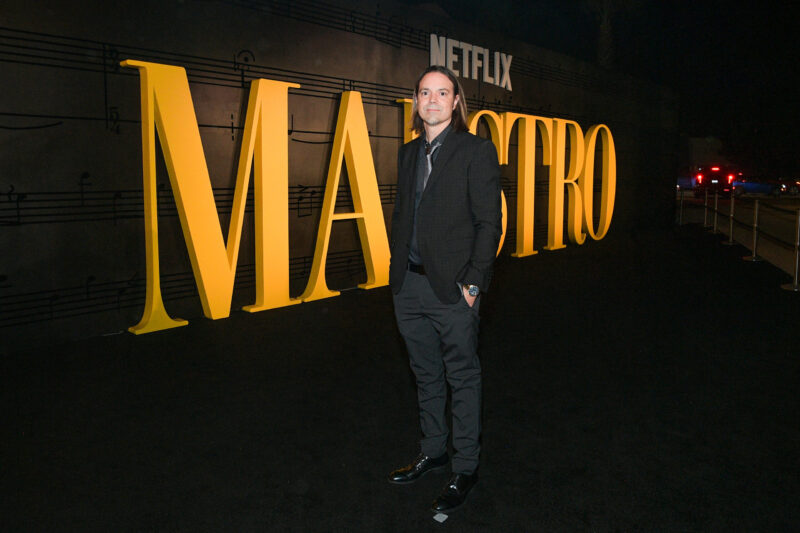
Supervising music editor and executive music producer Jason Ruder was previously nominated for a Best Achievement in Sound Mixing Academy Award for “A Star is Born” (2019). “I was completely thrilled for Bradley [Cooper], the entire sound team and myself. It was important for all of us to stay together as a team since ‘A Star Is Born’ [which Copper also directed]; it truly made it feel all of one arc as a growth of a craft and character.”
In terms of the writer/director’s overview, “Bradley Cooper is an incredible leader and creative mentor, and extremely hands-on from concept to finish,” Ruder said. “As soon as you begin discussing a project with him, you know the bar is set for the most incredible human emotional experience one can achieve in filmmaking. Our goal was to create an immersive experience to represent Leonard Bernstein’s music as an actual character presence in the film.”
Re-recording mixer Tom Ozanich was delighted to receive an Oscar nomination for “Maestro.” “Along with ‘The Creator,’ it was a one/two punch of elation,” he said. “I had to keep reviewing it every few seconds.”
His first conversations about “Maestro” began when the team was finishing mixing “A Star Is Born.” “At that point it was just the dream of how great the music could sound in Atmos,” Ozanich said. “Probably the biggest note was that Leonard Bernstein’s music was to play as a character in the film. The music had to play like his personality: bold and commanding but with great dynamics and, at times, playfulness.”
Copper immerses himself into every part of the film-making process, the re-recording mixer states. “Once Dean Zupancic [handling effects and Foley] and I have put a mix together,” Ozanich said, “Bradley sits between us and we all go deep into every nook and cranny of the film. It takes a very high level of focus as we root out any issues, experiment with things and shape the sound together.”
As SFX mixer Dean Zupancic recalls: “During our first meeting with Bradley [Cooper] his initial comment was: ‘The sound of ‘Maestro’ should have a rhythm, be subtle, dynamic and nuanced.’ Working on ‘A Star Is Born’ was a great experience that built the foundation for a trusted relationship between Bradley, Jason Ruder, Tom and myself.”
“Leonard Bernstein lived a lifestyle outside of the ordinary,” Zupancic said. “The sound of ‘Maestro’ is a reflection of all those traits. The music was played as a character; it was bold and made a statement.”
The re-recording mixer liked many of the creative sound choices that the director made while working on Warner Bros. Stage 10. “For example, how music and sound effects weaved in and out together; the overlapping sound transitions from one scene to another,” Zupancic said. “There are beautiful long dialogue scenes without score, giving sound effects the opportunity to support the emotion of a scene. It made the music more impactful when it came in.”
‘Oppenheimer’
On hearing of his Best Sound nomination for “Oppenheimer,” Christopher Nolan’s biopic about atomic bomb scientist J. Robert Oppenheimer, SSE/sound designer Richard King was “so proud of the film and my part in it. I’m so flattered that the work of myself and the rest of the sound team has been recognized.” Over the course of eight films he’s worked on with writer/director Christopher Nolan, “we’ve developed an efficient pattern,” King said. “We will have a conversation towards the end of pre-production, and he’ll mention anything that would be a good idea for me to start thinking about. Chris is very involved in the creation of the soundtrack and has strong ideas.”
The supervisor cut the sound effects along with Michael Mitchell and Randy Torres. “Randy also helped with sound design. We three are good collaborators and all of us do a bit of everything. Dialogue and what little ADR we did was overseen by Dave Bach, working with Russ Farmarco and Albert Gasser; Foley was programmed and edited by Christopher Flick. We had no real overarching concept for the soundtrack, other than to do the best work we could, and help achieve Chris’ vision.”
Between six and eight background pre-dubs were prepared for Gary Rizzo handling dialog and Kevin O’Connell on music and SFX, with maybe 15 effects pre-dubs and two Foley pre-dubs. “These were virtual pre-dubs but very tight,” King said. “Chris [Nolan] likes to work fast, going through the film every week and screening on Friday. To do this, the effects have to arrive at the stage more or less in the pocket. Then, in the course of the mix, the tracks are taken apart and put back together again.”
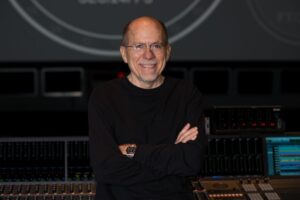
“Oppenheimer” marks the 22nd nomination for re-recording mixer Kevin O’Connell, who in 2017 won a Best Achievement in Sound Mixing Oscar for “Hacksaw Ridge” (2016).
Because at its core “Oppenheimer” is a dialogue-driven film, “we paid significant attention to intelligibility,” O’Connell said, “all the while ratcheting up the tension and emotion with the music and sound effects. There were between 12 to 16, 5.1-channel outputs for sound effects that represent literally hundreds of tracks. And between six and 10, 5.1 background stems that represent hundreds of backgrounds.”
Regarding his favorite memories from the project while working on Warner Bros. Stage 9, O’Connell said that “it was the first time I saw the film and we were counting down to the Trinity [atom bomb] Test at Los Alamos, with the tension building between the music and sound effects. When The Gadget goes off in complete silence … that was very impactful for me.”
Aside from a previous Best Achievement in Sound Mixing Oscar win for “Inception” (2011), Rizzo received nominations for Best Achievement in Sound Mixing for “Dunkirk” (2018), “Interstellar” (2015), “The Dark Knight” (2009) and “The Incredibles” (2004).
The key to a successful soundtrack is communication, he considered. “Certainly, after doing as many films together as we’ve done, there’s an ease and comfort. We’re not always going to get things our way, but we know we can speak up and collaborate. We’re not afraid to build something sonically elaborate and then tear it down if it doesn’t feel right.”
While handling dialog, loop group and ADR – “of which there is usually very little,” he said – Rizzo does not discount Richard King’s sound design. “The FX design work is so very integral to the success of a mix, and that design evolves and matures throughout our process,” he said.
Rizzo’s favorite scene occurs in Fuller Lodge, where Robert Oppenheimer is addressing his team at Los Alamos after bombs had been dropped on Hiroshima and Nagasaki. “It’s a very powerful scene that uses all the departments of sound to convey the brutally heavy guilt and responsibility that Robert was carrying,” he said. “Sound design plays how uncomfortable Oppy is feeling, but with reference to his education and academic insight.”
‘The Zone of Interest’
UK-born and -based Johnnie Burn said that he could take on three post-production roles for “The Zone of Interest” – supervising sound editor, sound designer and re-recording engineer, “because my workflow is less standard. It’s not so much a team of supervisors but more a team of first assistants who help me achieve the goals over a much longer time period than a more conventional workflow. Usually that division of labor is based around a need to have various supervisors arranging their work to meet at the final mix stage. Whereas I bring the mix together as I go.”
Prior to the shoot for “The Zone of Interest” – about the seemingly placid family life of Auschwitz commandant Rudolf Hoess — the supervisor met with writer/director Jonathan Glazer. “It was mandatory, Jonathan told me, that we were never going to go inside the concentration camp. We agreed that while he went off to film the family drama, I would have my own shoot of the sounds of Auschwitz. When we met again six months later, I wanted to play him what I felt 24 hours in Auschwitz would sound like.”
Burn is quoted on IMDB as saying: “If you heighten the credible realism, on such a subtle level, then it’s going to buy you a lot of dramatic impact. Because the realism of that sound provides a much deeper immersion for the viewer.” How so? “Films often make shorthand of sound elements so they can cut to the ‘chat’ of a scene,” he considered. “To provide focus, [directors] might remove all background sound during an intense monologue, even though it’s natural; it is like how your brain filters sound in the real world. I’m suggesting that sound technology and how an audience understands filmic conventions has moved on.”
The supervisor suggests that the role of sound designer is more like that of a sound director. “The person responsible for how sound gets used across the film to explore the emotional and narrative opportunities,” he said. “Down to even how sound is reproduced in the movie theater; not just the mix but playback formats. For me the sound-designer part involved months of research about sound via mostly witness testimony in Auschwitz, and how these things might have sounded. Our field recordings, as much as possible, covered that. Editorial was many months spent with my core team to put those pieces into place.”
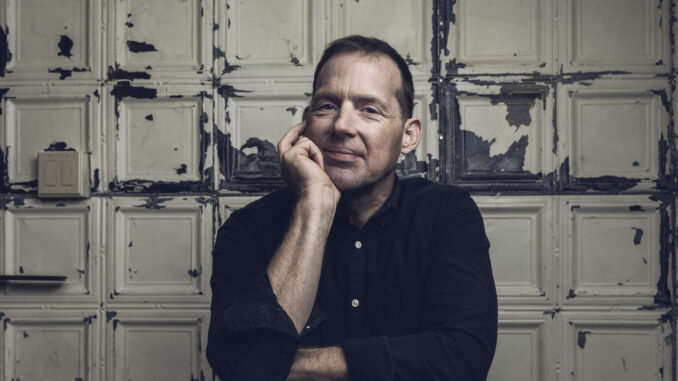
Burn’s primary goal while re-recording the film “was to authentically recreate the sound environment of Auschwitz during the pivotal summer and winter of 1943. Equally important was our commitment to handling this sensitive subject with the utmost respect and care, honoring the sanctity and experiences of the victims and survivors. Every aspect of the sound design was crafted with a deep sense of responsibility.”
At Wave Studios London’s Studio 3 for the Dolby Atmos immersive mix, the supervisor had 1,500 audio tracks across nine food groups, including MXscore, MXcamporchestra, Foley, HFXcamp, BGcamp, SDmachineofdeath.
While sound ambiences establish themselves, the film’s opening sequence shows just a black screen, before the director cut to the commandant’s family seated in the garden. “We placed these as a breathing space,” Burn said. “They also feel like a fourth wall that helps contextualize what you are watching. The Black Opening was in part a reaction to our need to remove [composer] Mica Levi’s score for the first half of the film. The score didn’t work to underscore the action; it needed to be more documentary. An overture [with blank screen] allows us to connect the audience to what they are about to watch.”
Regarding his favorite memories from the soundtrack, Burn is candid. “‘‘Favorite’ isn’t a word I would use,” he stated. “I cannot look at the scene with Rudolf [Hoess, camp commandant] in his garden smoking a cigar whilst we hear him murdering families in the gas chamber 100 yards away. It doesn’t feel right to say that it sounds ‘good’ but I do think it sounds accurate.”




